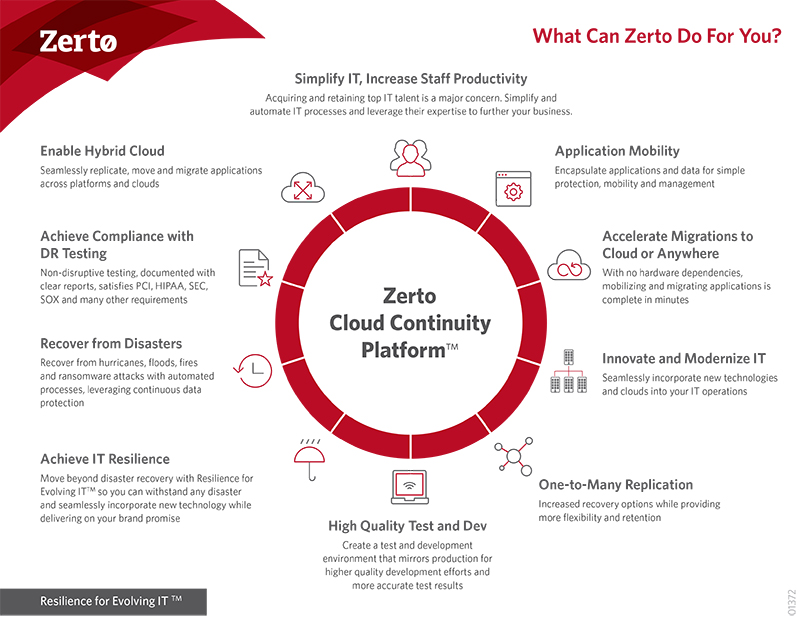
Future Proofing – What Can Zerto Do For You?
Introducing new technology to an IT organization often times is met with resistance. Although it plays a part, the resistance comes not from “fear of the unknown,” but rather the dread of integrating a new platform, learning a new platform, operating a new platform, and maintaining yet another new platform. How can an organization embrace change when it always feels like taking three steps backward to take just two steps forward again?
What is going to happen in the future that we need to plan for? Of course we can’t predict the future, but some projects are known in advance. Even with all the “knowns” and “unknowns,” an organization needs to invest in solutions built for the hybrid cloud. “Built for the hybrid cloud” means quickly adapting to new hardware and software platforms, new compliance standards or mandates, unexpected outages, migrations to other locations, and so on. You need solutions that can adapt to new, disruptive technology without requiring a brand new learning curve and set of operations and maintenance, and allow you to continue at the speed of business.
Integrate. First, how do we integrate this new platform into our organization? Sometimes it’s as simple as deploying a product, entering a system to connect to, and using the additional feature set. Other times it means learning how to architect a new platform for your particular business and infrastructure (or hiring someone to do so), and deploying this solution alongside the current platforms. Look for platforms and solutions that work with your current infrastructure, but also work with other clouds and platforms you’re interested in, so you won’t have to worry about building additional separate environments with disparate technologies. I often time relate this to my own personal struggles of moving from an “Apple/iPhone” home to a hybrid “Apple/Android” home — chargers/cables are different, interfaces are different and don’t act as you’d expect, and so on (although this example even holds true between models of the same vendor, right?!).
Next comes learning the (day 1 and day 2) operations and how the operations and support teams need to consume and utilize this new platform, followed by the day “n” operations of upgrades and patching — all alongside your current environment dependencies and operations. I’ve seen so many teams dreading learning “yet another portal/platform/solution/process.” Each solution seems to be “added onto,” versus “in place of.” How many more windows, browsers, and logins do we need? And maintenance?! What is the new process for updating and maintaining this solution? What order do I need to implement changes based my current infrastructure?
Whatever your challenges, struggles, and changes, I encourage you to seek out hybrid cloud-enabled solutions that will remove headaches for all your departments — not add to them. I’ll take this shameless opportunity to also offer you a future-proof solution with Zerto IT Resilience Platform. If you’ve been following our “What Can Zerto Do For You” blog series lately, you’ll notice how versatile of a solution we have. It’s amazing how our customers are able to consume a solution initially meant to ease replication and recovery during IT disasters, and transform these use cases across the board to benefit multiple facets of the organization. Be future-proof. Welcome the future of change with a solution built around removing that fear and risk so you can concentrate on what you are meant to — your business.
About the author:
Harry is a Technology Evangelist at Zerto focusing on driving adoption of Zerto’s enterprise class scalability and agility to organizations of all sizes and sectors, and even across clouds, hypervisors, and platforms. Prior to Zerto, Harry spent more than 8 years at VMware with 5 years in Professional Services as a Senior Consultant architecting and implementing private clouds and major datacenter migrations, and another 3 years in VMware’s Technical Marketing focused on product integration and scalability with the vRealize and vCloud product suites. @HarrySiii



